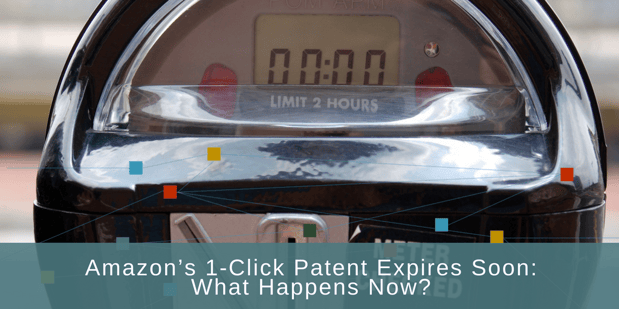 A lot has happened since Amazon managed to win the race to the patent office with their 1-Click patent twenty years ago. Not just in the world as a whole, but specifically in the world of ecommerce. Now that the patent is set to expire next month, experts wonder just how much that stranglehold on the frictionless purchasing experience benefitted Amazon.
A lot has happened since Amazon managed to win the race to the patent office with their 1-Click patent twenty years ago. Not just in the world as a whole, but specifically in the world of ecommerce. Now that the patent is set to expire next month, experts wonder just how much that stranglehold on the frictionless purchasing experience benefitted Amazon.
The Money in Question
Some of the articles reporting the expiration suggest that Amazon squeezed about $2.4 billion from their 1-Click patent. How? Well, first, they were the go-to on the internet for ecommerce. By making the buying process easier for all, from the frictionless checkout experience to the huge array of products, Amazon eclipsed the rest of the online shopping world.
Then, of course, there’s the licensing. Several other companies attempted to copy the one-click model, resulting in lots of time spent in the courtroom defending the patent. Only Apple received the go-ahead to license the one-click model. Everyone else, including Barnes & Noble, had to pay damages for infringement.
The surge in customers, plus the licensing royalties, plus the damages from infringement cases all very well could add up to the estimated $2.4 billion. In fact, we wouldn’t be surprised it we learned the sum was higher.
What Happens Now?
The big question on everyone’s lips is, “What happens now?” Well, somewhat obviously, hundreds of other ecommerce companies probably already have their own version of the one-click model ready to debut the moment they’re free to do so.
Does this mean Amazon is likely to see a dearth of customers in the coming months? Hardly. The company has continued to build and maintain processes that remove friction from the buying process. Now, instead of cutting down the time necessary for making a purchase, Amazon has turned its focus on cutting down the time between making a purchase and receiving the items.
Recent patents for drone delivery show where Amazon’s head is now. Other companies will soon be in the same position they’ve always been in as they continue to chase the processes Amazon has put into place.
Questions Behind the Original Patent
With the patent finally coming to an end, many are once more questioning why Amazon was granted the 1-Click patent to begin with. Indeed, nearly anyone with coding experience could recreate the process—and many actually have, to their company’s detriment once Amazon decided to enforce their intellectual property.
The truth, really, is that the patent should have been ruled too obvious. In fact, Canada held out for years before approving the patent. The European Patent Office determined once and for all that the patent was too obvious. Australia also refused to grant it. It’s only here in America that the patent was approved and has been enforceable.

In addition to the obviousness, there’s also the existence of prior art that wasn’t cited in the patent. These things should have prevented Amazon from receiving said patent, and thus from benefitting to the tune of $2.4 billion. But here we are, less than a month before the expiration of a patent they probably never should have received. The world is ready to jump on the technology the moment it’s available.
And Amazon will keep marching on.
IPVision and Patent Analysis
If you’d like to learn more about the patents your competitors hold, reach out for a quick session with our Advantage Dashboard. Pair this with our iScore tool to determine the strength of their patents and your own, and you’ll know everything you need to truly compete in the world of innovation If you’d like to know how these all work together within our state-of-the-art innovation consulting service, give us a call.



